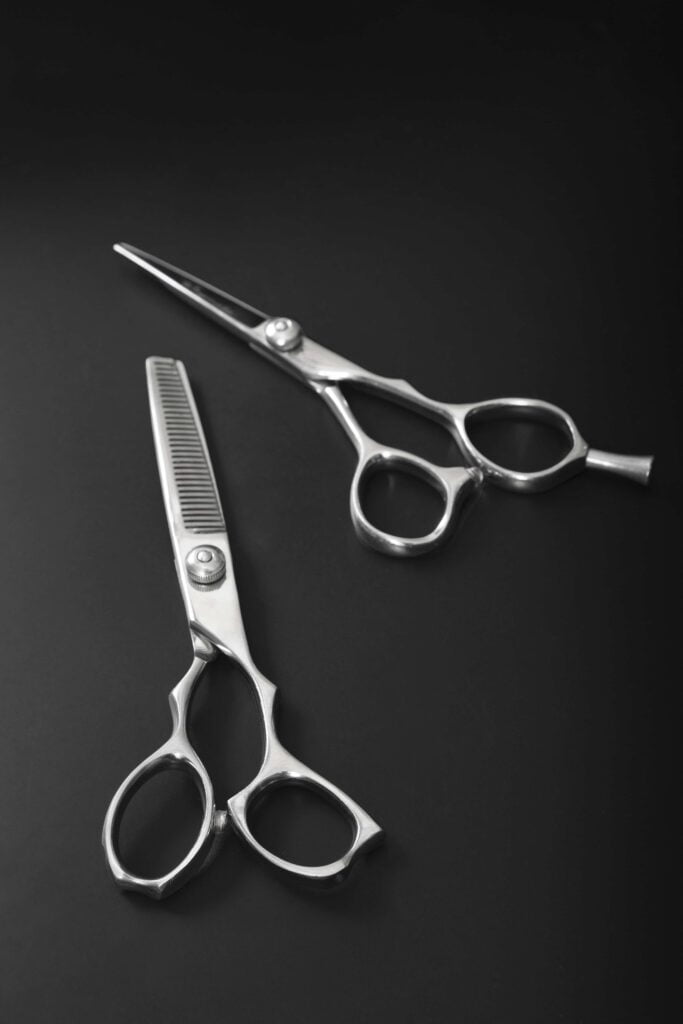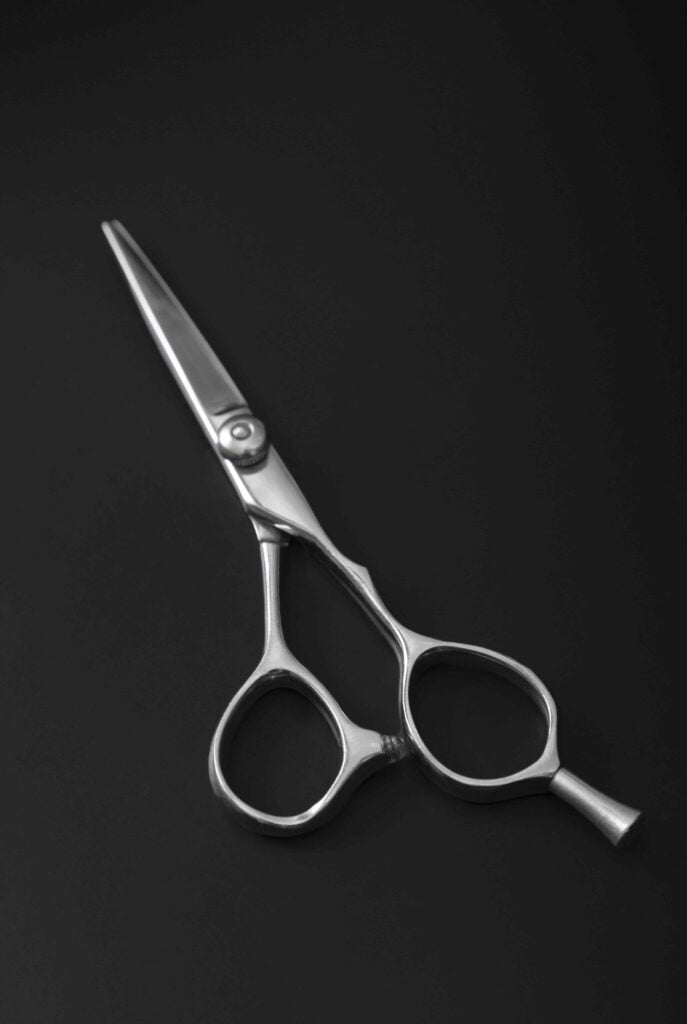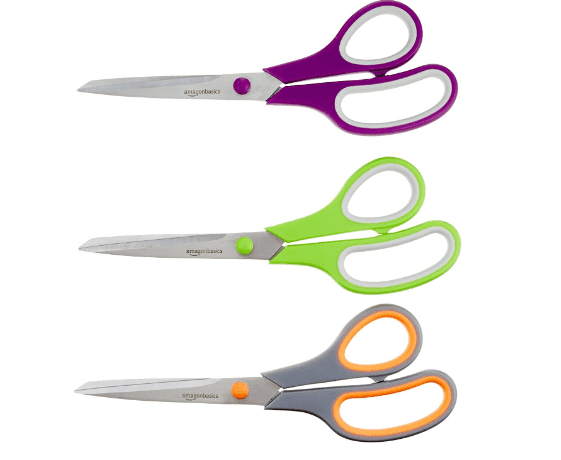The Art of Cutting: Exploring the World of Stainless Steel Scissors
Introduction
From opening packages to crafting, cutting tools are essential for everyday tasks. They play an important role in particular art, artistic expression and have a rich historical significance. Advances in technology have not only improved their efficiency but also prioritized user safety. This blog post discusses a specific type of cutting tool – stainless steel scissors.
The Evolution of Cutting Tools
Introduction of stainless steel:
Stainless steel has revolutionized cutting tools, offering superior durability and precision compared to traditional materials. Its corrosion resistance and uniform composition contribute to long tool life and sharp cutting edges.
User benefits and industry adoption: Users enjoy consistent, reliable performance, while the industry has widely adopted stainless steel for cutting tool manufacturing. Notable brands have played an important role in popularizing stainless steel scissors, showcasing its functionality and longevity.
Anatomy of Stainless Steel Scissors
Blades: Blades are the primary cutting elements of the scissors, typically made of stainless steel. Discuss the importance of sharp edges for precise cutting and how the quality of the stainless steel influences the sharpness.
Handles: Handles are the parts of the scissors that users grip during operation. Explore ergonomic designs and materials used for handles, emphasizing the importance of comfort and ease of use.
Pivot Screw: The pivot screw is the central point around which the blades rotate. Explain its role in controlling the movement of the blades and how a well-designed pivot screw contributes to smooth cutting.
Bolts or Fasteners: These are the components that hold the blades and handles together. Discuss the importance of sturdy bolts for maintaining the structural integrity of the scissors.
Finger Rests or Rings: Some scissors have additional components for finger placement or rings for added control. Discuss how these features contribute to user comfort and precision, especially in prolonged use.
Adjustment Screw: In some scissors, an adjustment screw allows users to fine-tune the tension between the blades. Explain the significance of proper tension for optimal cutting performance.
Finger Rest or Tang Extension: Some scissors may have a finger rest or tang extension on the handle. Discuss how these features provide additional support and control, especially in intricate cutting tasks.
Finger Holes: Finger holes are the spaces where the user inserts their fingers to operate the scissors. Explore variations in finger hole sizes and shapes, considering ergonomic factors for different users.
Decoration or Branding: Some scissors may feature decorative elements or branding on the surface. Discuss how these elements may not only add aesthetic appeal but also serve as a mark of quality or brand identity.

Types of Stainless Steel Scissors
Crafting Scissors:
Design: Crafting scissors are characterized by their precision and often feature pointed tips for intricate cutting. Some may have serrated edges for enhanced grip on materials like fabric or paper.
Purpose: Ideal for cutting paper, cardboard, fabric, and other crafting materials with precision. Popular among hobbyists, artists, and DIY enthusiasts for detailed projects.
Kitchen Scissors: Kitchen scissors typically have strong, durable blades with a versatile design. Some may include additional features like bottle openers or nutcrackers.
Purpose: Used for various kitchen tasks, such as cutting meat, poultry, herbs, and packaging. Versatility makes them an essential tool in the kitchen for both food preparation and general use.
Office Scissors: Office scissors are often characterized by a straightforward design with straight or slightly curved blades. They may have comfortable handles for extended use.
Purpose: Designed for cutting paper, opening envelopes, and general office tasks. Emphasizes ease of use and comfort for tasks that may not require the precision of crafting scissors.
Multi-Purpose Scissors: Multi-purpose scissors combine features from various categories to offer versatility. They may have a standard scissor design with added functionalities.
Purpose: Suited for users who require a single pair of scissors for a range of tasks. May be used in crafting, kitchen, and office settings, offering a balanced approach to different cutting needs.
Specialized Scissors:
Design: Some scissors are designed for specific tasks, such as embroidery or gardening. They may have unique blade shapes or additional features tailored to the specialized application.
Purpose: Geared towards niche markets, addressing the specific cutting requirements of certain activities. Examples include embroidery scissors with fine tips for delicate thread cutting or pruning scissors for garden use.
Choosing the Right Pair
Stainless steel material and quality: Consider the grade and quality of stainless steel used in the scissors. High-quality stainless steel ensures durability, corrosion resistance and long lifespan.
Purpose and Intended Use: Identify the primary purpose for which you need the scissors (eg, crafting, kitchen use, office work). Different applications may require specific features, such as pointed tips for crafting or stronger blades for kitchen use.
Blade Design and Sharpness: Evaluate the design of the blades including their shape and sharpness. Choose blades that suit your intended tasks, whether it’s precision cutting for crafting or tougher blades for tougher kitchen materials.
Handle Design and Ergonomics: Check the design of the handles for comfort and ease of use. Ergonomic handles with a comfortable grip reduce fatigue during prolonged use.
Size and weight: Consider the size and weight of the scissors, making sure they match the user’s hand size and intended application. For complex tasks, small and lightweight shears may be preferred, while larger, heavier shears may be suitable for heavy-duty cutting.
Adjustment and tension screws: An adjustable screw lets you fine-tune the tension between the blades for optimal cutting performance.
Left-handed or right-handed design: Some scissors are specifically designed for left-handed or right-handed users. Choose scissors that accommodate your dominant hand for better control and comfort.
Brand reputation and reviews: Research the reputation of the brand or manufacturer. Read customer reviews to gain insight into performance, durability and user satisfaction with specific models of stainless steel scissors.
Additional features: Some scissors come with additional features such as serrated edges, built-in bottle openers or protective sheaths.
Price and Budget: Consider your budget and compare the prices of different stainless steel scissors. Although quality often comes with a higher price, finding a balance between quality and affordability is crucial.

The Artistry in Craftsmanship
Material selection: High-quality stainless steel scissors begin with a careful selection of premium-grade stainless steel. The selected steel should have properties such as corrosion resistance, strength and durability, which ensure a long-lasting and reliable cutting tool.
Forging and Manufacturing Process: Craftsmanship often involves traditional forging techniques or advanced manufacturing processes. Forging increases the strength and elasticity of the steel, contributing to the overall durability of the scissors.
Precision grinding of blades: The blades of high-quality scissors are precision ground to achieve sharp and consistent edges. Craftsmen pay careful attention to the angle and bevel of the blade, ensuring optimal cutting performance.
Tempering for Hardness: The tempered heat treatment process is crucial to achieve proper hardness in the blades. This step ensures that the scissors strike a balance between being hard enough for sharpness and soft enough to prevent breakage.
Hand assembly and adjustment: In the crafting process, skilled artisans often assemble scissors by hand. Every component, including the blade, handle and screw, is carefully fitted together and adjusted to achieve the correct tension for a smooth and precise cut.
Ergonomic handle design: The design of the handles receives special attention, focusing on ergonomics and user comfort. Craftsmen consider the grip, shape and size of the handles for ease of use and reduced hand fatigue during extended cutting sessions.
Fine-tuning the pivot mechanism: The pivot mechanism with screws and bolts is fine-tuned to achieve the perfect balance between smooth movement and stability. This attention to detail contributes to the overall performance and longevity of the scissors.
Quality control and inspection: High-quality scissors go through a strict quality control system. Artisans inspect each pair to ensure they meet predetermined standards for sharpness, alignment and overall performance.
Finishing touches: Attention is paid to the aesthetic aspects of the scissors, including polishing and finishing touches. Artisans may add decorative elements or brand symbols, enhancing the visual appeal of the finished product.
Packaging and Presentation: The final step involves thoughtful packaging and presentation. High-quality stainless steel scissors are often presented in well-designed packaging, reflecting the craftsmanship and quality of the product.
Applications in Everyday Life
Kitchen Applications:
Example: In the kitchen, stainless steel scissors burn when chopping poultry, chopping herbs or sniping through food packaging. Scenario: Imagine effortlessly shredding a whole chicken or expertly chopping fresh herbs directly into a dish with stainless steel scissors.
Crafts and DIY Projects:
Example: When engaged in craft or DIY projects, stainless steel scissors are ideal for cutting lightweight materials like fabric, paper, and even cardboard. Scenario: Imagine a crafting enthusiast using sharp and reliable stainless steel scissors to easily create intricate shapes or precise cuts for a scrapbooking project.
Office and stationery work:
Example: Stainless steel scissors are essential in an office environment, tackling tasks such as cutting paper, opening envelopes or shredding documents. Scenario: Picture a busy office where stainless steel scissors can quickly and neatly cut documents or packaging.
Garden and outdoor activities:
Example: Stainless steel scissors with solid blades are great for light pruning in the garden or for outdoor activities. Scenario: Imagine a gardener effortlessly pruning small branches or gathering herbs using durable and sharp stainless steel shears designed for outdoor use.
Sewing and Textile Work:
Example: For sewing enthusiasts, stainless steel scissors provide precision cutting of fabric, thread and other sewing materials. Scenario: Imagine a seamstress cutting intricate patterns precisely for a patchwork design or a quilter smoothly cutting using reliable stainless steel scissors.
Emergencies:
Example: Stainless steel scissors are valuable tools in emergencies, such as cutting seatbelts or clothing. Scenario: Consider a first responder in an emergency or a person who relies on stainless steel scissors to cut quickly and effectively in critical moments.
School and Classroom Settings:
Example: Teachers often use stainless steel scissors for a variety of classroom activities, from cutting paper for crafts to preparing educational materials. Scenario: Picture a classroom where versatile stainless steel scissors play a central role in facilitating creative projects and hands-on learning.
Beauty and personal care:
Example: Stainless steel scissors with fine tips are perfect for grooming tasks, such as trimming hair, cutting nails or shaping eyebrows. Scenario: Imagine a salon or a personal grooming routine where precision stainless steel scissors contribute to achieving the desired aesthetic results.
Multi-functional use:
Example: Stainless steel scissors with additional features, such as serrated edges or built-in tools, demonstrate versatility for a variety of tasks. Scenario: Imagine a multitasking person using a pair of stainless steel scissors, opening packages, and handling small repairs, all in one tool.
Maintenance Tips
Proper care of stainless steel scissors is essential for longevity and performance:
Cleaning: Avoid harsh chemicals, wipe the blade after use. Drying: Dry thoroughly to prevent corrosion. Avoid Corrosives: Stay away from acids and chemicals. Storage: Store in a dry place, consider using sheets. Oil application: Apply mineral or scissor oil to the pivot for smooth movement. Avoid excessive force: Avoid excessive force, use for intended purpose. Proper Cutting Techniques: Use proper techniques for different materials. Sharpening: Check and sharpen if necessary. Pivot Screw Tightening: Periodically check and tighten as necessary. Avoid immersion in water: Prolonged immersion can cause rusting. Regular Inspection: Check for damage or wear periodically.
Tumbler Knife Sharpeners
Innovations in Stainless Steel Scissors
Cutting tools are undergoing transformative innovations, shaping their future: Advanced Materials: High-performance alloys and nanotechnology enhance durability and precision. Smart technology: Sensors provide real-time data on usage and maintenance requirements. Precision engineering: CAD and CNC contribute to intricately designed blades for specific applications. 3D Printing: Enables customized designs, lightweight tools and efficient material use. Multi-functionality: The tools combine measuring, gripping and cutting with electronic functions. Ergonomic Design: Focus on reducing user fatigue and improving comfort during use. Sustainability: Exploration of Biodegradable Materials and Eco-Friendly Manufacturing Processes. Hygiene innovation: Anti-microbial coatings address hygiene concerns. Wireless Power: Cordless tools with advances in battery technology for mobility. Augmented Reality: AR integration provides real-time guidance for accurate cutting tasks. Customization: Tools are becoming more adaptable to meet specific user preferences and needs.
Conclusion
Stainless steel scissors are crucial in the art of cutting for their precision, versatility, and durability. Renowned for sharpness, they find applications in crafting, kitchens, offices, and industries. Meticulous craftsmanship ensures user comfort, while their ubiquity in daily life and symbolic reliability underscore their significance. As tools of creativity, they contribute to precise designs, and ongoing innovations ensure their continual evolution at the forefront of cutting efficiency.

